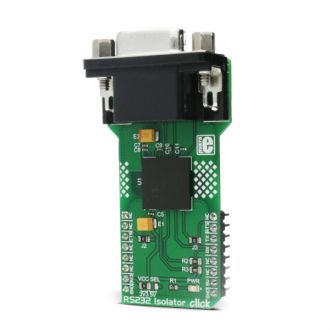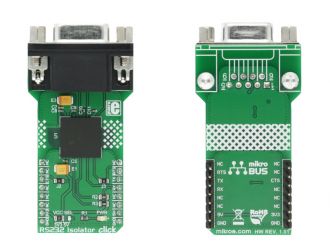
We strongly encourage users to use Package manager for sharing their code on Libstock website, because it boosts your efficiency and leaves the end user with no room for error. [more info]

Rating:
Author: MIKROE
Last Updated: 2019-02-01
Package Version: 1.0.0.0
mikroSDK Library: 1.0.0.0
Category: RS232
Downloaded: 4149 times
Not followed.
License: MIT license
RS232 Isolator click is a fully isolated dual transceiver click, used to provide secure and easy UART to RS232 conversion, with the galvanic isolation.
Do you want to subscribe in order to receive notifications regarding "RS232 isolator click" changes.
Do you want to unsubscribe in order to stop receiving notifications regarding "RS232 isolator click" changes.
Do you want to report abuse regarding "RS232 isolator click".

